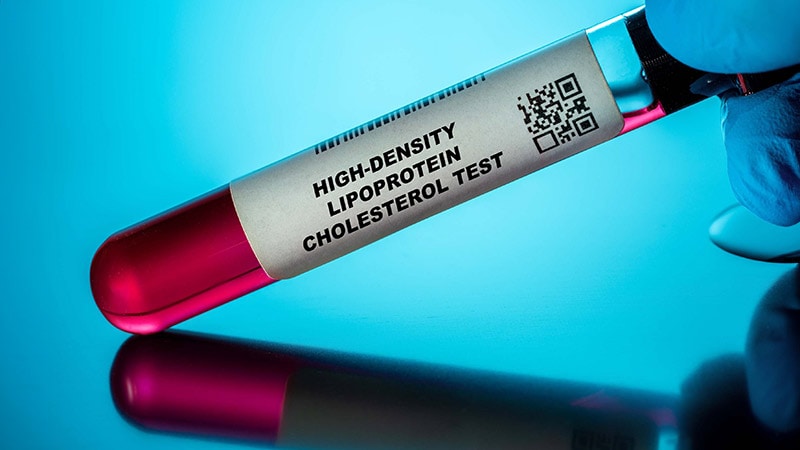Higher HDL-C Levels Linked to Prediabetes Reversion in Chinese Adults
Core Concepts
Higher HDL-C levels are associated with prediabetes reversion to normoglycemia in Chinese adults up to a certain threshold.
Abstract
Standalone Note here
TOPLINE:
Higher HDL-C levels positively linked to prediabetes reversal in Chinese adults.
METHODOLOGY:
Examined correlation between HDL-C levels and prediabetes reversion in a cohort study.
15,420 Chinese patients with prediabetes analyzed.
TAKEAWAY:
43% of patients experienced prediabetes reversal to normoglycemia.
Higher HDL-C levels increased likelihood of prediabetes reversion.
IN PRACTICE:
Maintaining HDL-C levels near the inflection point may enhance prediabetes reversion.
SOURCE:
Study published in Scientific Reports by Zihe Mo.
LIMITATIONS:
Study focused on Chinese individuals, more research needed across diverse genetic backgrounds.
Relied on fasting plasma glucose measurements, unable to capture full prediabetes complexity.
Secondary analysis faces limitations in managing unmeasured variables.
Observational study cannot establish causal relationship between HDL-C and prediabetes reversion.
Higher HDL Tied to Prediabetes Reversion — Up to a Point
Stats
"After a median follow-up of nearly 3 years, 6627 (43%) of patients with prediabetes had a reversion to normoglycemia."
"The groups with higher HDL-C levels had a higher likelihood of prediabetes reversal to normoglycemia (adjusted hazard ratio [HR], 1.90; P < .001)."
"A significant positive correlation with reversal to normoglycemia was observed below the HDL-C threshold (men: HR, 2.78; 95% CI, 2.37-3.26; women: HR, 2.22; 95% CI, 1.80-2.73)."
Quotes
"Keeping HDL-C levels near the inflection point in patients with prediabetes may greatly increase the likelihood of reversion from prediabetes to normoglycemia." - Authors
Key Insights Distilled From
by Drishti Agar... at www.medscape.com 02-07-2024
https://www.medscape.com/viewarticle/higher-hdl-tied-prediabetes-reversion-point-2024a10002nu
Deeper Inquiries
How can the findings of this study be applied to other populations with different genetic backgrounds
The findings of this study, which suggest a positive association between higher HDL-C levels and prediabetes reversion to normoglycemia up to a certain threshold in Chinese adults, can potentially be applied to other populations with different genetic backgrounds. However, it is crucial to conduct further studies across diverse genetic backgrounds to validate these findings. Different populations may have varying genetic predispositions and lifestyle factors that could influence the relationship between HDL-C levels and prediabetes reversal. Therefore, researchers should consider conducting similar studies in populations of different ethnicities to determine if the observed threshold effect holds true universally.
What are the potential implications of relying solely on fasting plasma glucose measurements in studies related to prediabetes
Relying solely on fasting plasma glucose measurements in studies related to prediabetes may have several implications. While fasting plasma glucose is a commonly used diagnostic criterion for prediabetes, it may not capture the full complexity of the condition. Prediabetes is a multifaceted metabolic state that involves various factors beyond glucose levels, such as insulin resistance, lipid profiles, and inflammatory markers. By solely focusing on fasting plasma glucose, researchers may overlook important aspects of prediabetes that could impact its progression and reversal. Therefore, future studies should consider incorporating a more comprehensive set of biomarkers and clinical parameters to provide a more holistic understanding of prediabetes.
How might the limitations of managing unmeasured variables in secondary analyses impact the validity of the study's conclusions
The limitations of managing unmeasured variables in secondary analyses can significantly impact the validity of the study's conclusions. In this study, as a secondary analysis of previously published data, there may be unmeasured variables that were not initially included in the dataset. These unmeasured variables could potentially confound the relationship between HDL-C levels and prediabetes reversion, leading to biased results or inaccurate conclusions. Without accounting for all relevant variables, the study's findings may lack robustness and generalizability. Researchers should strive to address these limitations by conducting more comprehensive primary studies that capture a wider range of variables to ensure the validity and reliability of their conclusions.
0
